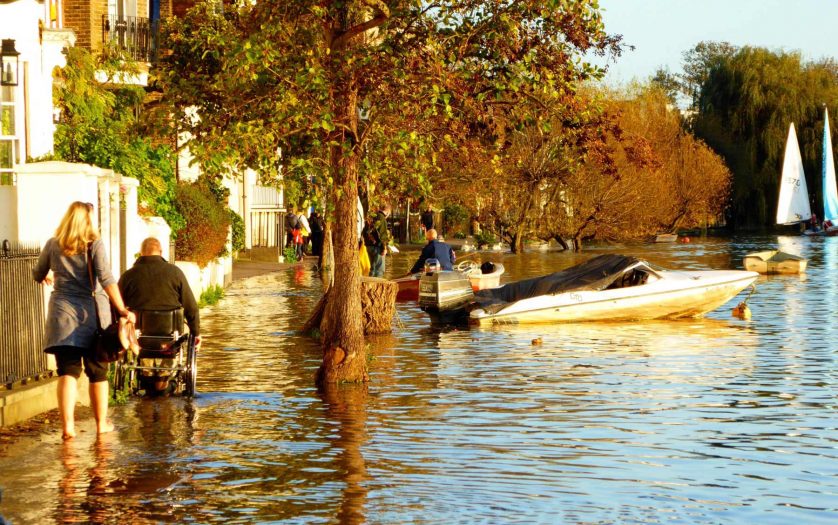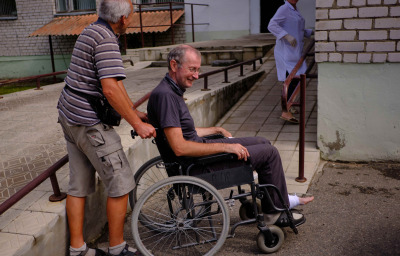
Australian authorities failed to take effective steps to protect those most at risk from foreseeable harm of the catastrophic flooding in the New South Wales (NSW) town of Lismore in February 2022, Human Rights Watch said today. Such extreme weather events are expected to become more frequent as a result of climate change.
Human Rights Watch found that NSW and local authorities did not provide adequate flood warnings, evacuation, or rescue support, leaving older people, people with disabilities, and those who were pregnant facing life-threatening circumstances with little government assistance.
“During the 2022 floods, NSW authorities did not adequately warn or help at-risk people, which led to terrifying and deadly consequences,” said Sophie McNeill, Australia researcher at Human Rights Watch. “Climate change exacerbates inequalities, and the failures seen in Lismore highlight the urgent need for the authorities to ensure inclusive climate action and planning.”
No conclusive evidence currently attributes the 2022 floods to the climate crisis, but the most recent report of the Intergovernmental Panel on Climate Change (IPCC), the world’s leading scientific body on climate change, projects an increase in more extreme rainfall events and flood magnitudes in eastern Australia due to warming temperatures. In addition, the east coast of Australia is likely to face ongoing La Niña weather conditions until early 2023, highlighting the need for Australian authorities to urgently address the needs of at-risk populations during extreme weather events.
As a top greenhouse gas emitter and fossil fuel producer, Australia has a human rights obligation to address climate change by both helping at-risk groups deal with the foreseeable harm of extreme weather events and reducing the global greenhouse gas emissions that are driving them.
In May 2022, Human Rights Watch interviewed 23 survivors of the Lismore flooding, documenting the experiences of older people, people with disabilities, and people who were pregnant. During extreme weather events, people in these circumstances often require assistance and additional time to evacuate, may not have access to warnings, and are frequently not meaningfully included in evacuations and emergency response plans.
The flooding in Lismore peaked at 14.4 meters, 2 meters higher than flooding levels previously recorded. It occurred after intense and sustained rainfall during a wet La Niña weather pattern that broke all existing rainfall records. Four Lismore residents drowned – two women in their 80s and a man and a woman in their 50s – and more than 2,000 homes became uninhabitable.
Stranded community members who were powerless to carry out rescues told Human Rights Watch they had been left distressed and angry by the lack of government assistance.
“I could hear her screaming; she was only three houses down,” said a 63-year-old man whose 82-year-old neighbor drowned. “By the time it was light, and it [the floodwater] was up to the doors, I couldn’t hear her anymore.”
Many residents in low-lying South Lismore woke in the early hours of February 28 to find the only way to survive the rapidly rising floodwater was to climb onto their roof or into their roof cavity. When authorities did not respond to the majority of calls for help, more than 1,000 people were rescued from the floodwaters by community members who put their lives at risk to rescue their neighbors.
The NSW government created an independent inquiry into the 2022 floods that found the risk of such severe weather was not adequately communicated through the State Emergency Service (SES) flood bulletins, on its website and Facebook, and other warning methods, and that many residents did not receive text messages urging them to evacuate.
Out of 15 households interviewed, only two said that emergency services had knocked on their door and advised them to evacuate. But emergency services offered no assistance, leaving families with small children, older people, and people with disabilities unable to leave. Emergency services also failed to answer the desperate calls for rescues from older people, people with disabilities, people who were pregnant, and parents with young children.
Emergency services later told the flood inquiry that they lost up to 3,000 calls for assistance, after their overwhelmed software system turned off.
The flood inquiry found that this led to a “systemic failure” that resulted in the community not having enough time to evacuate, and Lismore residents not understanding how severe the flooding was expected to be.
Emergency services rescued only a few of the people interviewed who needed urgent rescue. As the flood inquiry found, the actions of community members kept the loss of life from being significantly higher.
“I was calling SES, 000, just over and over again,” said Harry Gregg, 24, who risked his life to save a 91-year-old woman. “And no one was picking up and I tell you what, that was the scariest thing ever, when you call 000 and no one answers, you’re like, well I’m truly on my own.”
The NSW SES responded to Human Rights Watch findings, stating that: “During this flood emergency, NSW SES responded in accordance with existing emergency management arrangements. However, an emergency service organisation, we will always be looking out for what we can do better.” Since the Lismore floods, the NSW SES said it had launched a public information campaign in six languages that aims to improve flood safety communication in diverse communities, undertaken a transition to the new nation-wide Australian Warning System to bring the agency in line with a nationally consistent framework for emergency warnings, increased operational capacity through additional training and call-taking capability, and is working proactively with at-risk local communities for flood preparedness and better understanding what they should do if they need to evacuate.
Emergency messaging methods and emergency preparedness and response programs should be inclusive, accessible to everyone, and developed in consultation with people with all types of disability, including physical, sensory, and intellectual. The NSW government should urgently carry out the flood inquiry recommendation to have “clear, consistent and effective messaging prior to and during a disaster to ensure all community members understand the risk in all its dimensions including vulnerability, capacity, exposure and hazard characteristics.”
The NSW government should also ensure that actions and planning developed out of the NSW Climate Change Adaptation Strategy includes consulting with at-risk groups to identify their needs and evaluate effective practices in the state’s adaptation planning. The Australian government should start collecting disaggregated data of people whose deaths are related to climate change, including by age, gender, and disability.
As the global climate crisis intensifies, high emitter and fossil fuel producer countries like Australia have human rights obligations to reduce their emissions, end all new fossil fuel projects, and prepare for foreseeable risks of extreme weather events, in part by ensuring those most at risk are protected.
“With severe climate change impacts expected in the years to come, the Australian government needs to make at-risk groups a priority in their extreme weather response planning,” McNeill said. “At the upcoming UN Climate Change Conference, COP27, Australia should show it’s serious about preventing the worst effects of the climate crisis by announcing an end to new fossil fuel projects and a rapid transition to renewable energy.”








